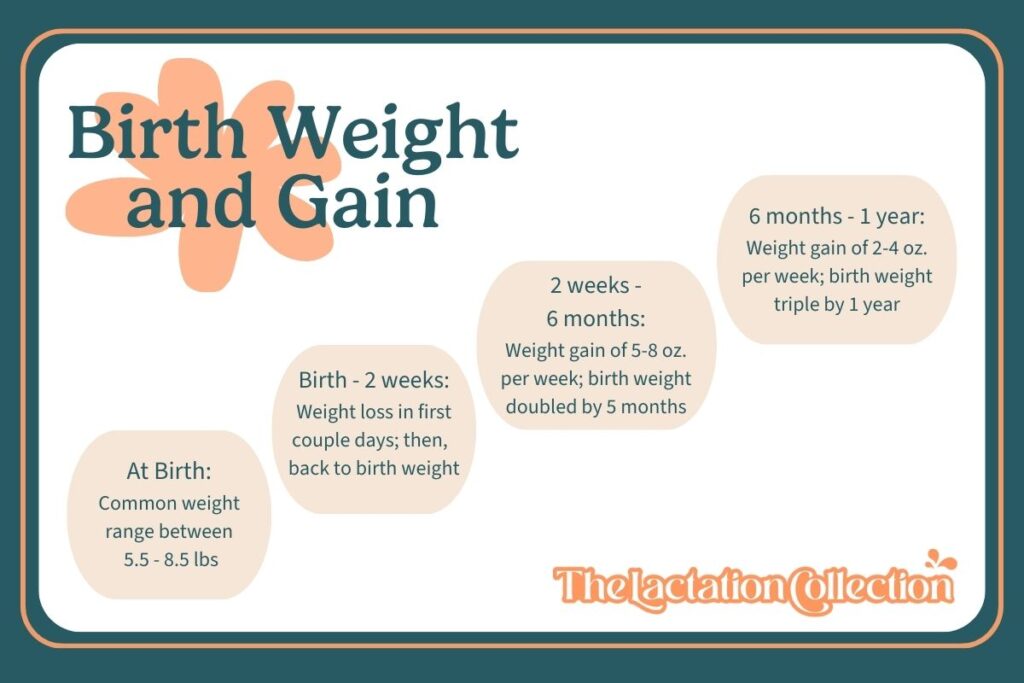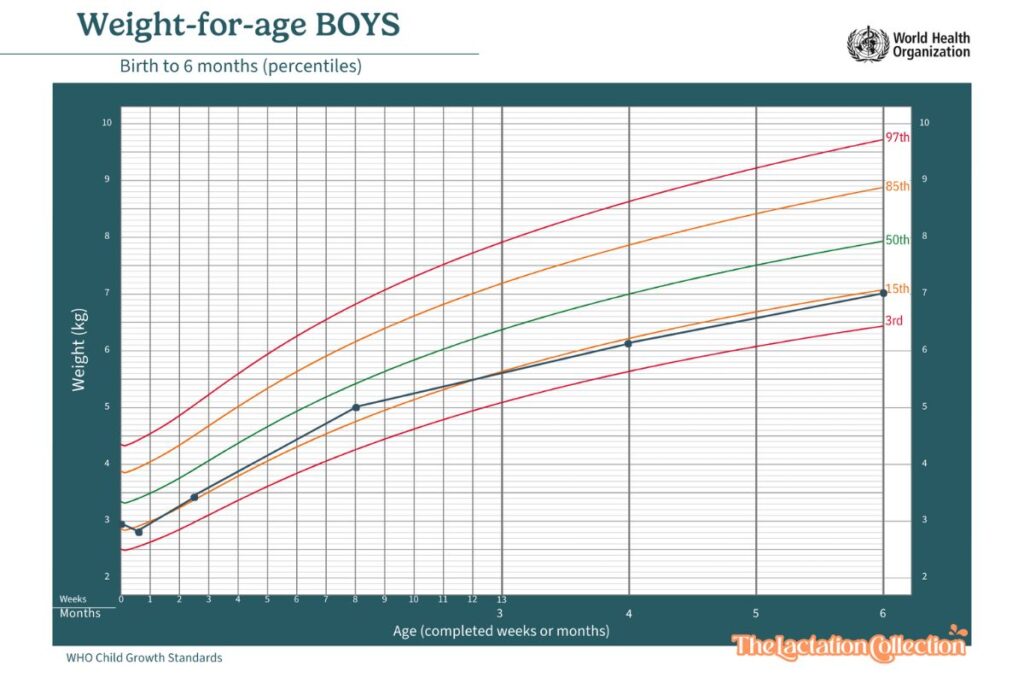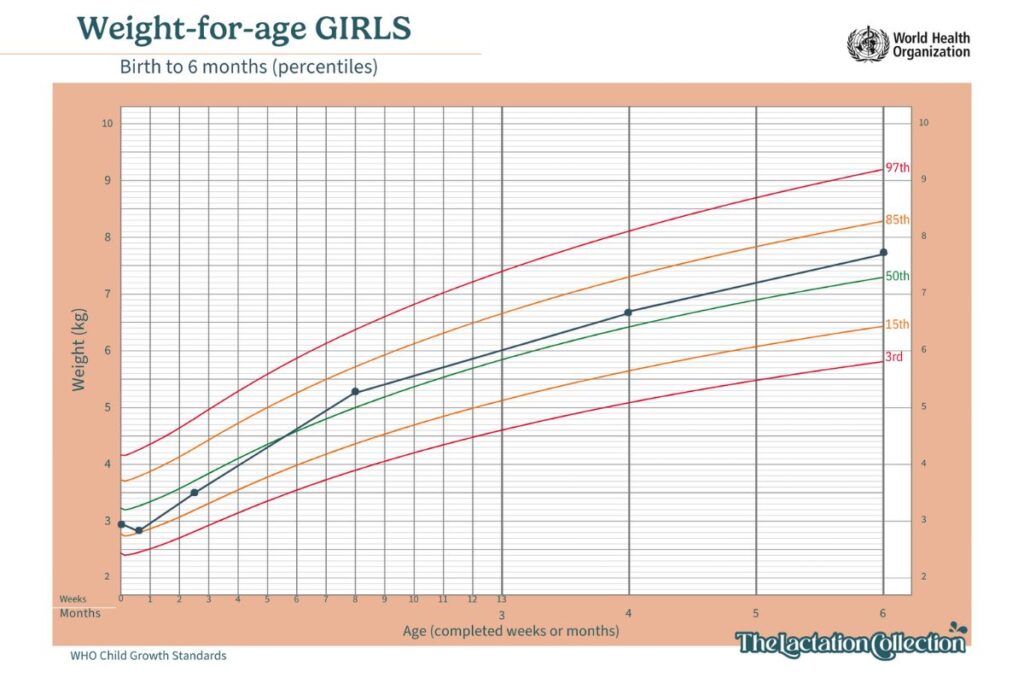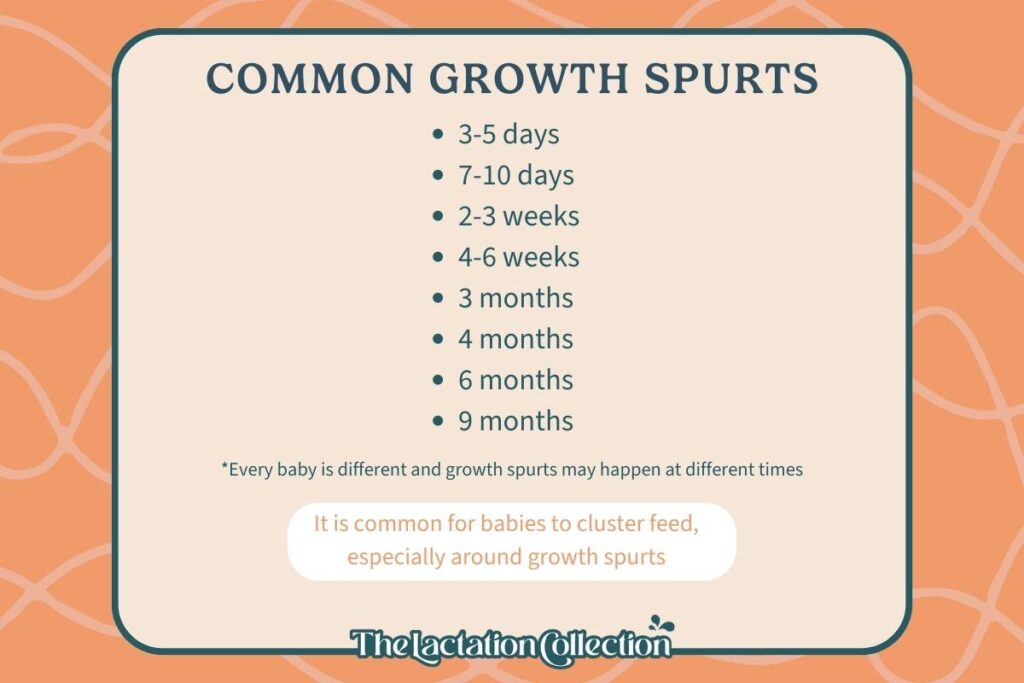Hey there, new (or expecting) mamas! Wondering about how your baby will grow in their first year? You’re in the right place. We’re diving into everything from how much your little one might weigh at birth to how they’ll keep growing month by month. It’s all about understanding what’s normal, spotting your baby’s unique patterns, and knowing when and how to check in with experts if you need to. Get ready for some handy tips and reassurances that will help you keep your baby happy and healthy.
Weight gain is a common concern for new parents, and it’s important to remember that healthy babies come in all shapes and sizes. From birth through their first year, babies follow a reasonably predictable trend in growth.
Here’s what you need to know about average birth weight, weight gain, growth spurts, and the importance of consistency in monitoring your baby’s growth.
Birth weight and early adjustments
The average birth weight for babies in the United States is between 7 and 7.5 pounds, though it’s common for full-term babies to weigh anywhere from 5.5 to 8.5 pounds. In the first few days after delivery, it’s normal for babies to lose some weight; normal weight loss is 5-10%, more than 10% is concerning. However, they typically return to their birth weight by about two weeks of age.
If you’d like to learn more about what to expect for newborn weight loss, read What to Expect: Newborn Weight Loss.
If you’re ok to share your baby’s birth weight, please complete the one-question survey below. After submitting your baby’s birth weight, you’ll be able to see the combined data from all participants.
Total responses:
Growth patterns in the first year

First Six Months: During this period, babies usually gain about 5-8 ounces a week and are expected to double their birth weight by around 5 months.
Six to Twelve Months: The growth rate slows slightly, with babies gaining about 2-4 ounces a week, usually tripling their birth weight by their first birthday.
Monitoring growth beyond the charts
These are my twins’ growth charts. You can see that both babies started at the same weight. I fed them the same thing* (breastmilk), the same amount, at the same times. It just goes to show that you can’t compare one baby to another, not even twins!
*For baby boy, we did occasionally supplement in the first week with formula because we were treating him for jaundice.


While growth charts offer a broad overview of your baby’s growth over time, the day-to-day details are just as crucial. Here’s how to keep track of these essential clues:
- Feeding Patterns: Monitor how long your baby feeds, the time between feedings, and the total number of feedings per day. Look for consistent, full feeds and frequent feedings, typically about 8-12 times in 24 hours, as indicators that your baby is well-nourished.
- Diaper Output: A healthy number of wet and dirty diapers each day signals that your baby is getting enough to eat and drink. This direct measure is crucial for their growth. Read more about how many dirty diapers you should expect.
- Activity and Alertness: An engaging and curious baby usually signifies happiness and health. Their level of activity and alertness can give you insight into their well-being.
Read “Growth Charts and a Breastfed Baby” to learn more about growth charts.
Understanding and navigating growth spurts

Growth spurts can lead to sudden increases in appetite and fussiness. Common times for growth spurts include:
- 3-5 days
- 7-10 days
- 2-3 weeks
- 4-6 weeks
- 3, 4, 6, and 9 months
During these periods, you might notice your baby wanting to feed more often. This is normal and indicates they are going through a growth spurt and adjusting their feeding needs accordingly.
Blog post: Will I produce enough breastmilk for my baby?
Precision scales and IBCLC support

Our IBCLCs use highly accurate scales during consultations to perform weigh-feed-weigh sessions, which determine exactly how much milk your baby consumes during each feeding.
This process not only provides immediate, accurate feedback on the effectiveness of a breastfeeding session but also helps in monitoring your baby’s growth trend over time.
Consistently using the same high-quality scale ensures that weight measurements are accurate and comparable from one visit to the next, facilitating early detection of any deviations from expected growth patterns and allowing for timely interventions if necessary.
Seeking support
If you have concerns about your baby’s growth or feeding, our team of IBCLCs is here to help.
Whether you need an in-person consultation (available in Utah) or prefer a virtual meeting, we’re ready to offer expert guidance and support to ensure your baby is healthy and thriving.
And that’s a wrap on our journey through your baby’s first year of weight gains and growth spurts! We hope you’re walking away feeling more informed and less worried about what’s to come. Remember, every baby grows at their own pace, and the real signs that they’re doing just fine are in their feeding, diapers, and how active and alert they are. If you ever feel unsure, we’re here for you with advice and support. Let’s keep those babies thriving together. Reach out anytime—you’ve got this, mama!
Do not hesitate to reach out for help; we are here to guide you through growth charts, milestones, and all aspects of feeding, ensuring you have all the insights needed for your baby’s growth and health journey.








